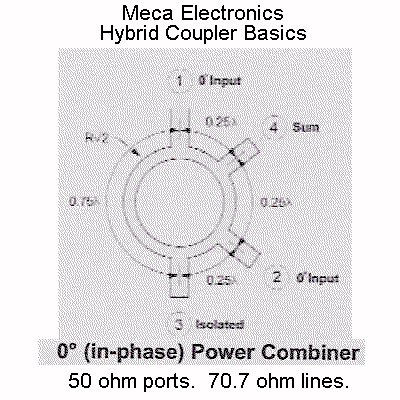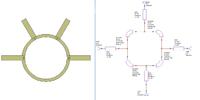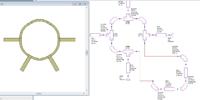btv_murthy
Full Member level 3
Dear sir,
I don't know,how to find the value of RADIUS OF CURVATURE value of MCURVE of Hybrid coupler. Presently I am getting the S-PARAMETER values for the 180 deg HYBRID COUPLER as follows for both schematic and EM simulation.
for schmatic simulation S(1,1), S(2,1), S(3,1), S(4,1) for EM SIMULATION S(1,1), S(2,1), S(3,1), S(4,1)
-6.3478DB, -5.2062DB, -10.707DB, -6.7046DB 6.3478DB, -5.2062DB, -6.7046DB, -10.707DB
I am expecting the following values.
for schmatic simulation S(1,1), S(2,1), S(3,1), S(4,1) for EM SIMULATION S(1,1), S(2,1), S(3,1), S(4,1)
-34 DB, -3.001DB, -3.001DB , -34DB -34 DB, -3.001DB, -3.001DB , -34DB
I am here wtih attaching the schematic ,layout and related document. Please help me any body to resolve this problem.
I don't know,how to find the value of RADIUS OF CURVATURE value of MCURVE of Hybrid coupler. Presently I am getting the S-PARAMETER values for the 180 deg HYBRID COUPLER as follows for both schematic and EM simulation.
for schmatic simulation S(1,1), S(2,1), S(3,1), S(4,1) for EM SIMULATION S(1,1), S(2,1), S(3,1), S(4,1)
-6.3478DB, -5.2062DB, -10.707DB, -6.7046DB 6.3478DB, -5.2062DB, -6.7046DB, -10.707DB
I am expecting the following values.
for schmatic simulation S(1,1), S(2,1), S(3,1), S(4,1) for EM SIMULATION S(1,1), S(2,1), S(3,1), S(4,1)
-34 DB, -3.001DB, -3.001DB , -34DB -34 DB, -3.001DB, -3.001DB , -34DB
I am here wtih attaching the schematic ,layout and related document. Please help me any body to resolve this problem.














